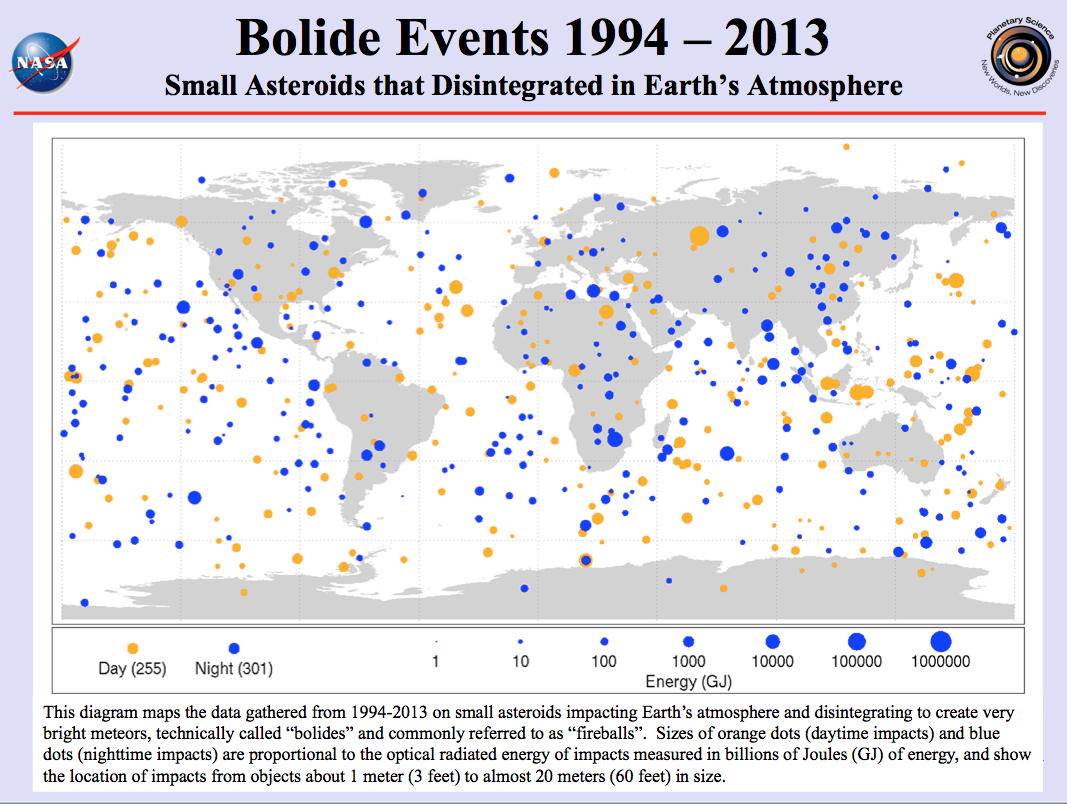A couple of weeks ago, I blogged about a new NASA video showing the relative locations and orbits of the space debris they are tracking. The assumption here is (and I think it’s correct) is that all this space debris is man-made. Anything natural approaching from the cosmos is either going to hit the atmosphere or just speed on by as it is traveling much too fast to be captured by earth’s gravity.
And there IS stuff that comes by earth from ‘out beyond’ and it happens more often than you might think. NASA has just released a map of all small meteorites (from 1 meter to 20 meters in diameter) that have impacted the earth’s atmosphere from 1994 through 2013 – a period of 20 years (once again I am indebted to the most excellent SpaceRef newsletter for this story). In that 20 year period, NASA traced 556 meteorites of this size impacting the earth’s atmosphere, about one every 13 days. I think that’s much more frequent than most people imagine.
Any one of these meteorites would be capable of damaging or destroying a space elevator and, like space debris, will have to be carefully watched and tracked. But unlike space debris, where you have areas along the length of the space elevator with much higher (and lower) probabilities of impacts, meteorites like these could literally hit the space elevator anywhere along it’s length.
A Space Elevator Operations Center will have tracking objects like these as one of its primary responsibilities.
And what do you do if you find one that has a finite chance of hitting your space elevator? Your only option, really, is to move the tether out of the way. In their baseline-setting book, Edwards and Westling proposed having a movable earth station for the tether in order to avoid severe earth weather and also to be able to induce oscillations in the tether. The theory is that if you can make the tether “zig” or “zag” when the space object whizzes by, you can avoid it.
While I agree with the principle, I would respectfully disagree with the method. Why make the tether oscillate over its entire length in order to move a very small portion of it out of the way? There are going to be multiple climbers on the tether at any one time. If you give them a method of propulsion (ion engines would be perfect for this), the one(s) closest to the potential point of impact can induce the oscillation (and other climbers can thrust in the opposite direction to dampen out the oscillations once the object is past). Also, they’ll be able to react faster – you may not have time to have a wave propagate 75,000 kilometers or more to get the job done.
I think a really cool 3D animation would be to show a section of the tether with climbers moving up and down, carrying cargo, examining and repairing the tether as needed and inducing and removing oscillations as necessary. My animation skills are not up to this – any takers?

